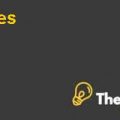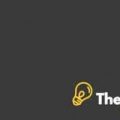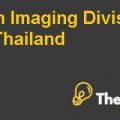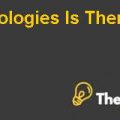
Objectives
Dr Rylett also had to find a way to encourage volunteerism among the members and to dispel the illusion that taking part in activities such as lectures, training, or department meetings are not seen as measures of productivity and that the main focus is upon research work. A shift in this mindset is necessary which would encourage volunteerism and encourage the members to think of the well-being of the whole department rather than focusing on achieving individual goals.
The second goal which she wishes to achieve is to establish a high-performance culture within the department. There were two levels of performance one being of unintentional underperformance, and the other was willful underperformance. To achieve a high-performance culture she wanted to establish some evaluation criterions and measure performance given throughout the activity year.
Thus, while being a feasible goal in the case measuring teaching activities was unfeasible when it came to measuring general input given in maintaining the wholesomeness of the department. In all, the analysis aims at identifying the different specific challenges that Rylett faces and will have to find solutions for within her five-year tenure as chairwoman in the university.
Analysis
The main challenges faced by Rylett are to unite the faculty members of the department of toxicology, Pharmacology, and Physiology, and eliminate any signs of discontentment among them. This would be done by instilling the belief that each member is equally valued and holds a respective place within the department.
Departmental decision making was a solution that could bring together all the faculty members by establishing an executive committee. This expanded committee would have the members assume specific roles creating the wider base for representation in comparison to the older smaller committee consisting of senior members. However, there was a catch as with a larger committee there was a possibility that the efficiency would be sacrificed over effectiveness.
The larger the committee, the more time decision making would take which can result in delayed activities, as more members would need to be consulted on every trivial matter. Another aspect was that with an expanded committee; Rylett could not consult a few members without unintentionally showing favoritism towards a few members as all would need to be consulted in unison. Not all changes would be acceptable to each and every member; therefore, decisions may take time to be made and reaching consensus is a time-consuming task.
The executive committee would also be effective only if the members actively participate and volunteer their time to its activities. Time being a scarce resource by these faculty members was spent very frugally and only spent on activities that they deemed fruitful to their career progression and an overall profession.
As participating in activities ensures that the department is being developed and progressing, was purely based on the members will and there could be no imposition on them to do so. Participation was not written in their respective job descriptions, and a large chunk of their time was devoted to research with activities such as teaching, conducting seminars and training were seen as preliminary activities.
Here the challenge lies in ensuring that everyone understands the value of these activities and that ultimately they too will benefit from it, thus, volunteering in these activites is beneficial rather than being unfruitful.
More challenges lie in the way of Rylett with the need to installing a high-performance culture within the department. Currently, the research portion of the workload experienced by faculty is satisfactorily done; however, the problem arises in the teaching portion of the workload. Teaching is seen as an additional work that adds no value to their career as the research is the real measure of productivity.
Secondly, there are no evaluative techniques in place to measure the performance being delivered; therefore, no concrete conclusions can be made without placing some techniques. Teaching is understandably seen as additional workload because there are no incentives to encourage better performance for these activities that matches the encouragement shown towards research work.
To overcome this challenge, the solution of establishing performance criteria breeds new problems of its own. These problems include what aspects of performance need to be identified? How would the different workloads between faculties be identified? Without the documentation of the standard criterion, there could be no actions taken; thus, documentation would have to be taken at the earliest.............................
This is just a sample partial case solution. Please place the order on the website to order your own originally done case solution.
The newly appointed chairman of the Department of Physiology and Pharmacology (department) in the Schulich School of Medicine and Dentistry of thought about how she would approach the next five years in her new role. The department was thinking about two important issues that it faces: the creation of a cohesive department and education high performance culture. She became the department at the time when the direction was needed. The department was formed in June 2002 by the merger of the Department of Physiology and small department of pharmacology and toxicology. While the merger has gone well, the chair still felt that some teachers in the field of pharmacology felt as if their department was taking on physiology. At present, it was sometimes difficult to assess the performance between the faculty due to differences in the workload, and lack of documentation. Now thinking that the Department move towards the introduction of best practices in their processes. Chair would like to look at the problem in a broader perspective. She asked how this issue could be the best in the frame and what potential solutions might look like. "Hide
by Murray J. Bryant, Ken Mark Source: Richard Ivey School of Business Foundation 3 pages. Publication Date: October 27, 2009. Prod. #: 909M14-PDF-ENG













